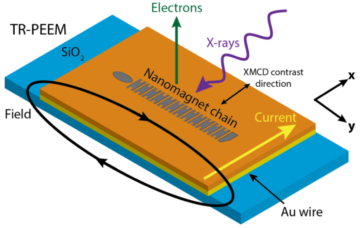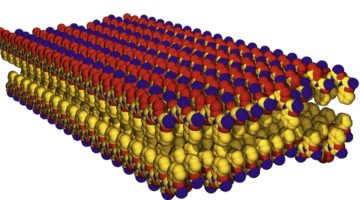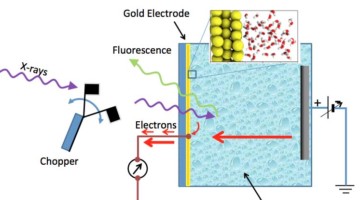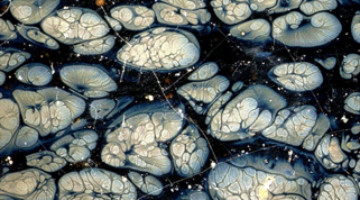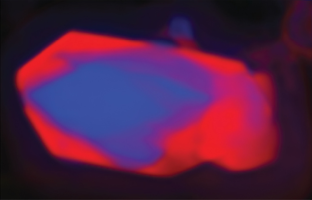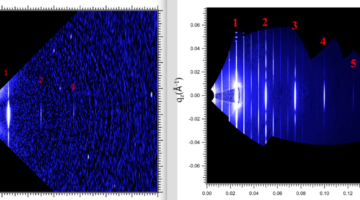A time-resolved x-ray imaging technique directly observes signal propagation dynamics in nanomagnetic logic (NML) chains. The technique can assess NML reliability on fast time scales and help optimize chain engineering for this promising ultralow-power computing architecture. Read more »![]()
![]()
Peptoid Nanosheets Offer a Diversity of Functionalities
Researchers at the ALS have recently observed peptoid nanosheets as they self-assemble at an oil–water interface. This development opens the door to designing peptoid nanosheets of increasing complexity and functionality for a broad range of applications, including improved chemical sensors and separators, and safer, more effective drug-delivery vehicles. Read more »![]()
![]()
A Milky Mystery: The Case of the Casein Micelles
We all know that milk contains important nutrients such as calcium and protein that help build bones and muscle. But how much do we really know about these ingredients at the molecular level? To learn more, scientists from New Zealand and Australia came to the ALS to x-ray some milk.
Read more »
Molecular Structure of Water at Gold Electrodes Revealed
ALS researchers have now made a first-ever observation of the molecular structure of liquid water at a gold surface under different charging conditions. This marks the first time that the scientific community has been able to achieve such high sensitivity in an in situ environment under working electrode conditions. Read more »![]()
![]()
Terra Sigillata: Evolution of Roman Ceramics Reflect Changes in Technology, Life
Ancient terra sigillata ceramics were the most famous and ubiquitous Roman tableware, yet when their manufacturing spread to other locations, some of the ceramics’ characteristics changed. Researchers from France and the ALS traced the changes.
Read more »
The Butterfly Effect on Magnetic Vortices
A recent x-ray microscopy study at ALS Beamline 6.1.2 provided evidence that the ultrafast dynamics preceding magnetic vortex formation exhibits the characteristic chaotic behavior known as the butterfly effect, where minute changes can significantly determine the final outcome of a process.
Antiferromagnetic Spins Do The Twist
At ALS Beamline 4.0.2, researchers have found that the spins in an antiferromagnetic nanolayer perform a version of “The Twist,” turning one way and then the other, challenging a model that has been a cornerstone of exchange-bias theory for 27 years.
Read more »
Rare Iron Oxide in Ancient Chinese Pottery
New analysis of ancient Jian ware reveals that the distinctive pottery contains an unexpected and highly unusual form of iron oxide. This rare compound was only recently discovered and characterized by scientists and so far has been extremely difficult to create with modern techniques.
Read more »
Record-Setting Microscopy Illuminates Energy Storage Materials
Using soft x-ray ptychography, researchers at the ALS have demonstrated the highest-resolution x-ray microscopy ever achieved by imaging five-nanometer structures. The researchers used ptychographic imaging to map the chemical composition of lithium iron phosphate nanocrystals, yielding important new insights into a material of high interest for electrochemical energy storage. Read more »![]()
![]()
New ALS Technique Guides IBM in Next-Generation Semiconductor Development
A new measurement technique developed at the ALS is helping guide the semiconductor industry in next-generation nanopatterning techniques. NIST and IBM researchers collaborated on the technique, which allows scientists to evaluate the 3D buried features inside a film. The ALS is currently the only place in the world that has such capability.
